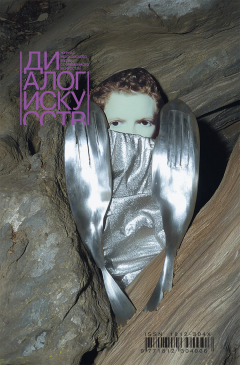
|
Svetlana Gusarova: You wrote a book about Bataille who praised transgression. For a long time it was one of the artistic methods but it is not respected today. Why?
Oksana Timofeeva: Because transgression was misinterpreted. Its commonplace understanding is the practice of crushing, making scandals and slaps in the face of public taste. But transgression is wider. Bataille who made this concept so popular included in it any ritual, even marriage. Thus, transgression is a necessary part of every social action in which there is a ritual. In art, transgression is primarily related to testing the limits and boundaries.
Gusarova: So transgression as a testing the limits of the possible has always been and will always remain in art?
Timofeeva: Yes. When Leonardo draws a bird, it’s transgression, an attempt to see something beyond the limits of the human body. In my opinion, transgression is the essence of art, which lies at the core of artistic gesture. Not only scandalous, provocative, but in general any truly artistic gesture is a transgression. Once transgression is gone, art is over.
Gusarova: With what time delay do art and ethics cross borders?
Timofeeva: Radical feminist art of the 1970s implied transgressive overcoming the boundaries of patriarchal culture. It was pornographic, scandalous and violated all possible norms. But the breakdown of ethical model is only beginning now. It became possible because male and female artists then showed courage, went beyond the limits and discovered that there are no limits but boundaries – and expanded them. If art followed ethics, we would have a set of dogmas, like not going here, not touching this. Such kind of training.
Gusarova: But artists are constantly trying to put in a position of those who need to be trained, the chorus of prohibitions sounds louder. What should we do?
Timofeeva: Indeed. Not a good situation. This privilege of ethics over aesthetics rejects art in its avant-garde role. In the ongoing ethical turn, I am confused by some moralistic tendencies – the moraline that poisons works and act of artistic activity itself. Art should be better oriented towards politics rather than ethics, because in its pursuit of the limits of what is possible and the horizon of the imagination, it is closer to politics.
Gusarova: There is now a clear slant to the right. Will the right or conservative agenda win?
Timofeeva: Georges Bataille said that the left is becoming right over time because the world is moving in a clockwise direction. Female – in the sense of revolutionary, emancipatory, natural, rebellious – transforms into rigid, male, conservative. Anarchy becomes power, and so on. The world is not static, but it is not moving in the direction we like but towards solidification where everything, including the best, becomes the past. Anything can be opposed to this but not peace. If we are apolitical, static, we will still not settle down. We’ll just get bumped to the right. The ethical limits imposed on philosophical thought and artistic activity today also have elements of this kind of ossification. But I don’t see anything tragic about it, as art is a process that is directed in the opposite direction, and within itself the limits will break. True art will find a way to move in the counterclockwise direction.
Gusarova: A new ethical norm allows you to ask global questions. That’s why I want to ask you – what is the mission of art today?
Timofeeva: I put a lot of hope in art. Art is extremely sensitive and has begun to bridge the gap between people and other things before others. Artists come up with practices for communicating with plants and animals. On the one hand, there is a mainstream side of the process of pushing art to the limits of the human being, which is also rapidly turning into a dogma (all the artists have already started talking about new materialisms, about the need for an object-oriented ontology, everything is soaked in some commercial spirit and turns into a new ideology before our eyes). But on the other hand, there is also a rational grain. Art invents new languages, not only verbal but also bodily practices that unite us with the whole world of things.




